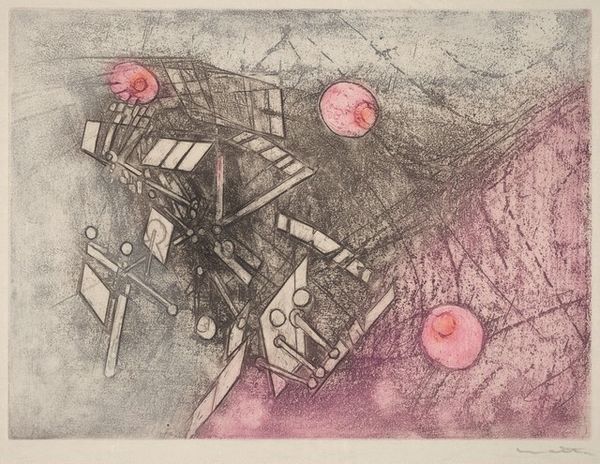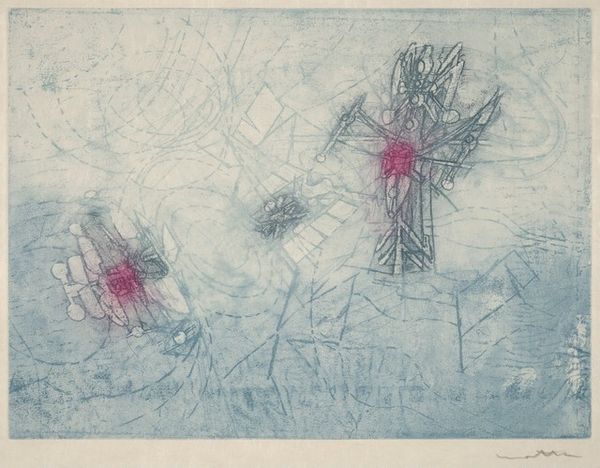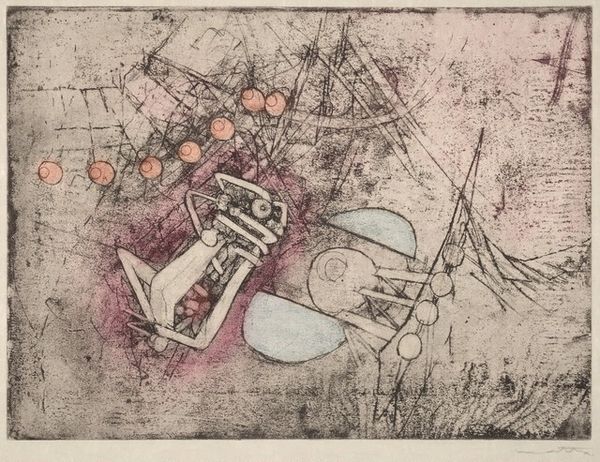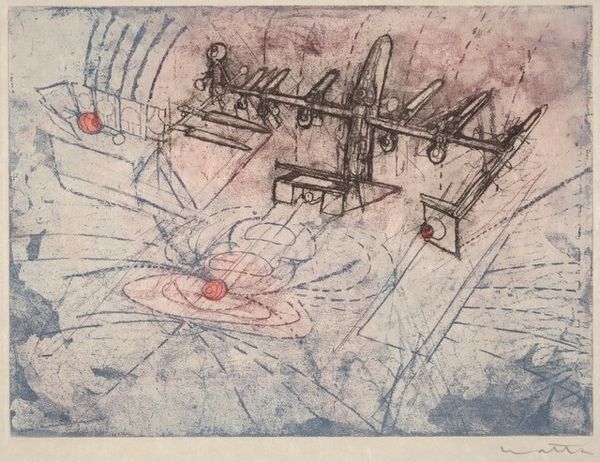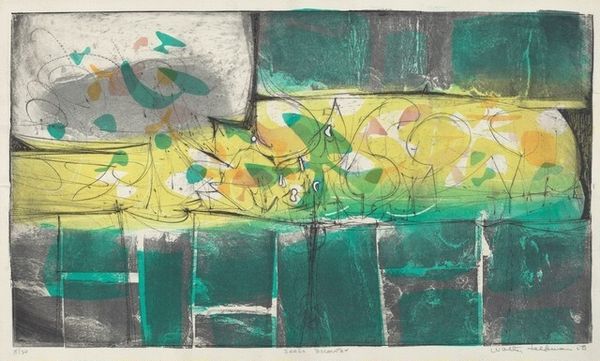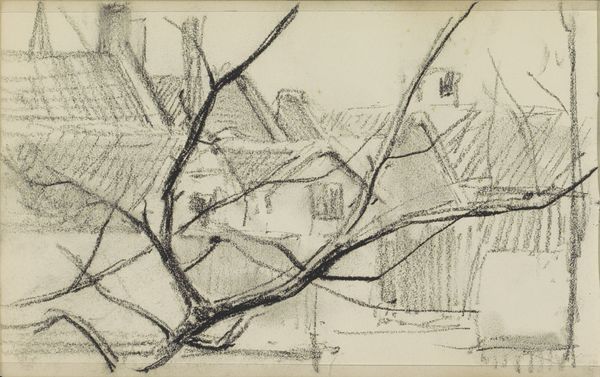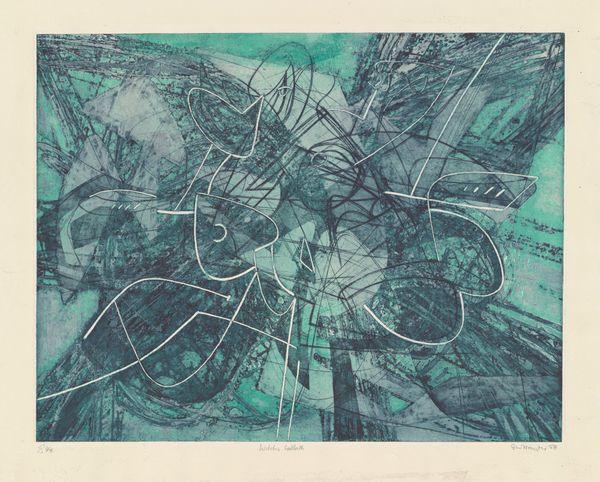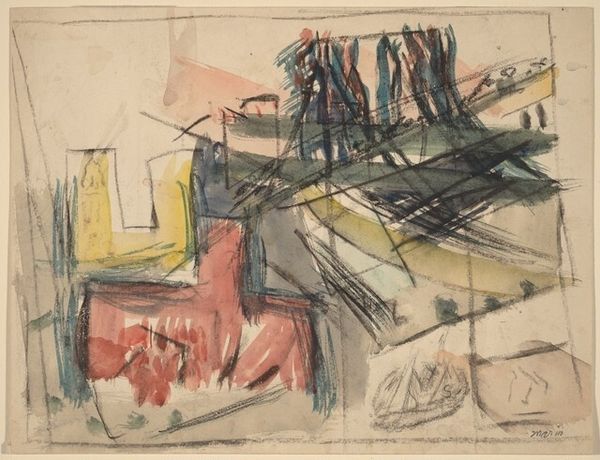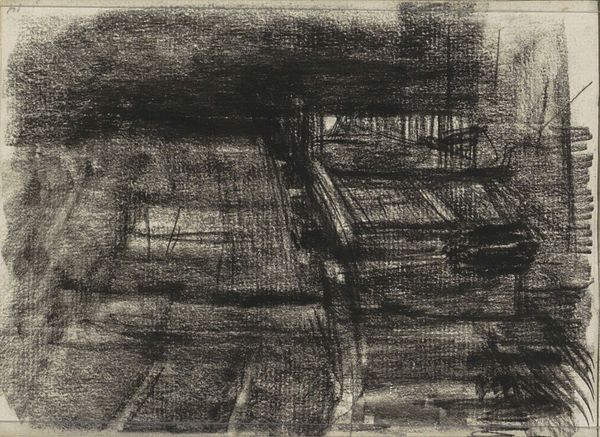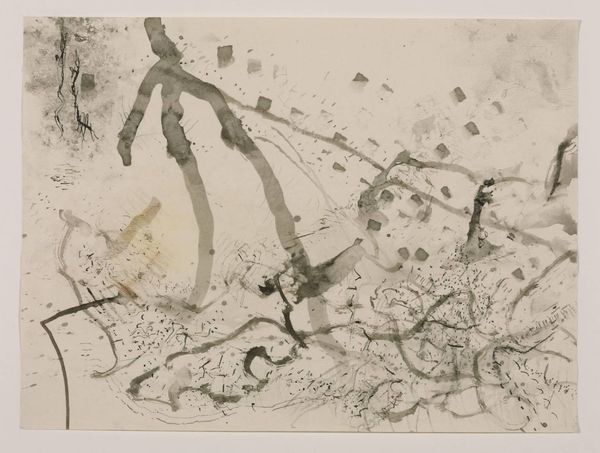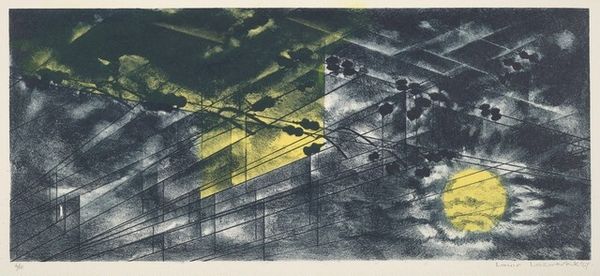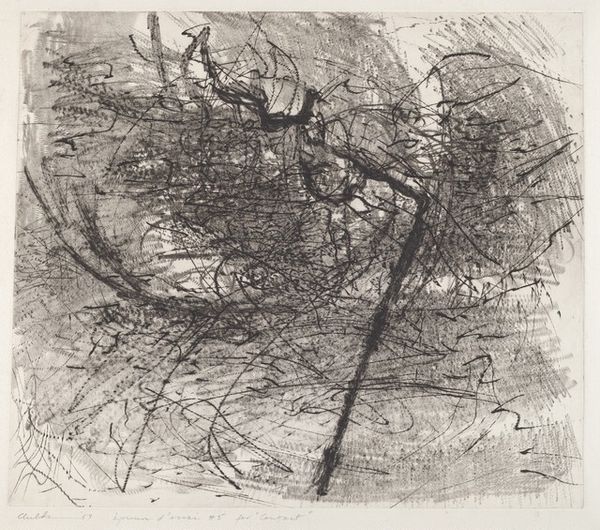
mixed-media, print, etching
#
mixed-media
# print
#
etching
#
abstraction
#
mixed medium
#
modernism
Copyright: National Gallery of Art: CC0 1.0
Curator: Immediately, the chaos resolves into a spatial puzzle. Look at the etching, this "Composition IX," as Matta entitled it in 1962. It feels like a fragmented architecture floating in some undefined ether. Editor: It strikes me as quite unsettling. There’s a frenetic energy—a sense of barely contained, impending collision, and yet, undeniably balanced in its arrangement. Curator: Observe how Matta uses line and color to establish that very balance. The rigid geometric framework is tempered by these organic, almost bioluminescent pink spheres—focal points that draw the eye across the composition. The use of mixed-media creates such depth, doesn't it? Editor: Absolutely. But what about the social context? Considering the period, do you think Matta was responding to the political and social turmoil? It reminds me of the cold war space race with the geometric figures suggesting a machinery hovering in outer space. Curator: Potentially. What’s compelling is that the framework allows for myriad readings. One might even suggest that its non-objective nature resists a definitive singular social interpretation, and moves it towards more universal anxieties of form and space. But that does not exclude interpreting this disorienting spacial framework as, perhaps, Cold War paranoia made manifest on paper. Editor: Agreed. This abstraction, for me, really embodies the angst of that era. I wonder what impact "Composition IX" had on its initial audience during the peak of these anxieties. Did its enigmatic character encourage contemplation, or amplify fear? Curator: It undoubtedly challenged prevailing notions of pictorial space. Its impact perhaps stems from a challenge it imposed to the spectators perceptions rather than offering didactic messaging on geopolitics. It forces you to confront a kind of beauty even within its deliberate discordance, in the way its forms interact, isn't it? Editor: I’m finding I appreciate how it avoids easy answers; how its aesthetic potency comes from asking compelling, even uncomfortable questions about our perception of order, and where to find grounding when the familiar becomes fractured. Curator: A fitting reflection, especially given the cultural landscape today, wouldn’t you say? Thank you for this perspective. Editor: And thank you for guiding the formal aspects, it allows to better address and express some of my social-historical curiosities about it!
Comments
No comments
Be the first to comment and join the conversation on the ultimate creative platform.
